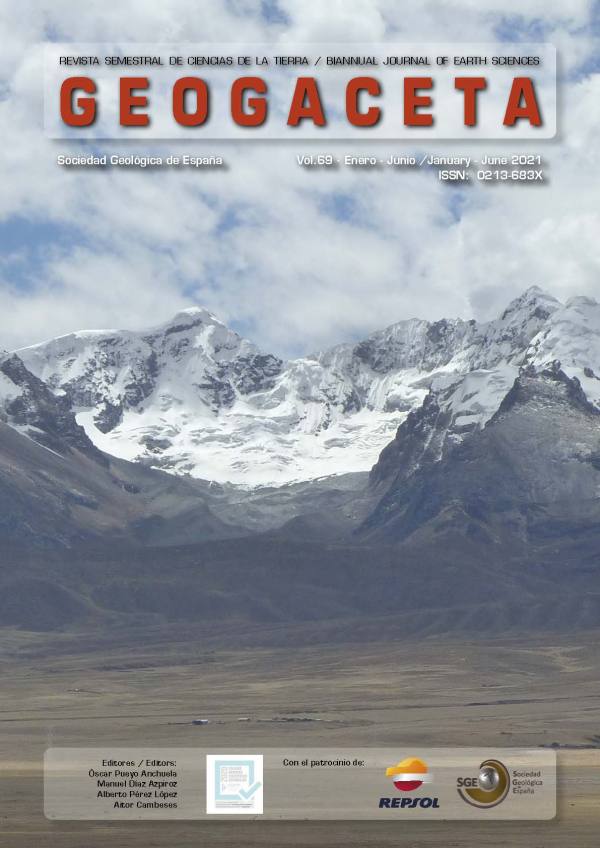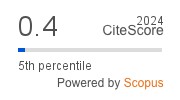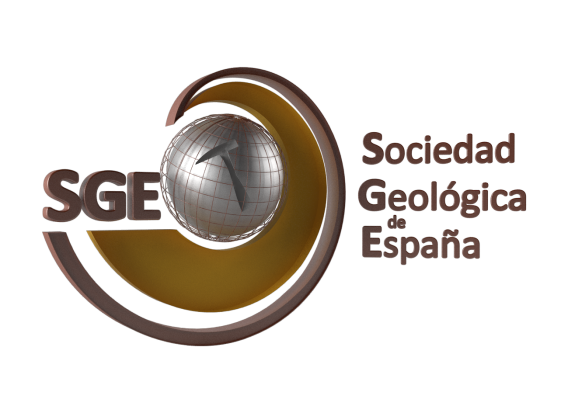Mercury alloy for secondary gold ores extraction in Roman times. Fact or fiction?
DOI:
https://doi.org/10.55407/geogaceta102452Keywords:
roman gold mining, mercury, Eria gold district, placer ores, geochemical explorationAbstract
One of the major controversies in the geo-archaeological study of Roman gold mining concerns the use of mercury (Hg) amalgamation for gold concentration in placer-type deposits, where appears as native gold, in the form of small particles or nuggets that accumulate in the sediment. Despite the use and properties of Hg were known in Roman times, few studies have been focused on the conditions under which its use was justified in the recovery of gold from placer deposits. In this article a soil geochemical study has been conducted to confirm its use in the gold recovery process within this type of exploitations. To this end, the concentration of Hg was analyzed in sections of the washing channel (agogae), where the gold was extracted. The results indicate that Hg anomalies are associated with the collection and subsequent use of mercury, since they are concentrated in the lower sectors of the mine. This suggests the use of Hg for gold mining recovery in placer ore deposits, shedding light into the metallurgical methods used in Roman times.
References
Cressie, N. (1990). Math Geol. 22, 239-252. https://doi.org/10.1007/BF00889887
Domergue, C. (1986). MOM Éditions 11(1), 109-119.
Domergue, C. y Hérail, G. (1999). Aquitania Supplément (9), 93-116.
Fernández-Lozano, J., Gutiérrez-Alonso, G. y Fernández-Morán, M.Á. (2015). Journal of Archaeological Science 53, 356-373. https://doi.org/10.1016/j.jas.2014.11.003
Fernández-Lozano, J., González-Díez, A., Gutiérrez-Alonso, G., Carrasco, R. M., Pedraza, J., García-Talegón, J., Remondo, J., Bonachea, J. y Morellón, M. (2018). Minerals 8(11), 518. https://doi.org/10.3390/min8110518
Fernández-Posse, M.D. y Sánchez-Palencia, F.J. (1988). La Corona y el Castro de Corporales II: campaña de 1983 y prospecciones en la Valderia y la Cabrera (León). Ministerio de Cultura, Dirección General de Bellas Artes y Archivos, Junta de Castilla y León, Consejería de Educación y Cultura, 153 p.
Heredia, N., Fernández, L.P., Martín-González, F. y Bahamonde, J.R. (2015). Geológica Acta: an international earth science journal 13(1), 1-23.
Hillman, A.L., Abbott, M.B., Valero-Garcés, B.L., Morellon, M., Barreiro-Lostres, F. y Bain, D.J. (2017). The Holocene 27(10), 1465-1474. https://doi.org/10.1177/0959683617693903
Lewis, P.R. y Jones, G.D.B. (1970). The Journal of Roman Studies 60(1), 169-185. https://doi.org/10.1017/S0075435800043343
Luque, C., García-Iglesias, J. y García-Coque, P. (1989). Trabajos de Geología 18, 3-10.
Ruíz del Árbol, M., Sánchez-Palencia, F.J., Sastre, I. y Orejas del Valle, A. (2014). Water History 6(1), 95-113. https://doi.org/10.1007/s12685-014-0100-z
Rupérez, J.L., Ballester, A.B.L., García-Cortés, A. y Romero, S.M. (2012). Atlas Geoquímico de España. Instituto Geológico y Minero de España, Madrid, 592 p.
Ramage, A., Craddock, P.T., y Cowell, M.R. (2000). King Croesus'gold: excavations at Sardis and the history of gold refining, Massachusetts, Cambridge, 272 p.
Sáenz, C. y Vélez, J. (1974). Contribución al estudio de la minería primitiva del oro en el Noroeste de España. Ediciones Atlas, Madrid, 190 p.
Sánchez-Palencia, F.J. (1980). Noticiario Arqueológico Hispánico 8, 214-289.
Sánchez-Palencia, F.J., Fernández-Posse, M.D., Manzano, J.F., González, Y.Á. y González, L.L. (1990). Archivo español de arqueología 63(161), 249-264.
Sánchez-Palencia Ramos, F.J. (2000). Las Médulas (León): un paisaje cultural en la" Asturia Augustana". Instituto Leonés de Cultura, León, 350 p. https://doi.org/10.3989/tp.2000.v57.i2.257
Sánchez-Palencia, F.J. y García, A. (2014). En: Minería romana en zonas interfronterizas de Castilla y León y Portugal (Asturia y NE de Lusitania) (F.J. Sánchez-Palencia, Ed.), Junta de Castilla y León, Valladolid, 231-242.
Downloads
Published
How to Cite
Issue
Section
License

This work is licensed under a Creative Commons Attribution-NonCommercial-ShareAlike 4.0 International License.
Until the year 2023 the author assigned the copyright to the Sociedad Geológica de España, but from 2024 the author retains the copyright and grants the Sociedad Geológica de España the right of first publication and non-exclusive distribution of each article in all current or future media, while transferring, also non-exclusively, the commercial rights for the distribution of the printed version of Geogaceta. On the other hand, the articles, from the year 2023, are available simultaneously with their publication, under the Creative Commons CC BY-NC-SA 4.0 license, which allows copying, transforming the work, but if any transformation is distributed, the new work must be distributed under the same license, and never for commercial purposes, while acknowledging the authorship and original publication in GEOGACETA, so that the only role of copyright is to give authors control over the integrity of their works and the right to be properly acknowledged and cited.









